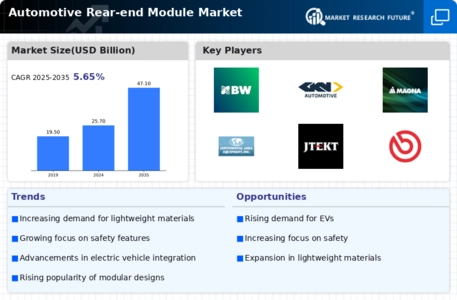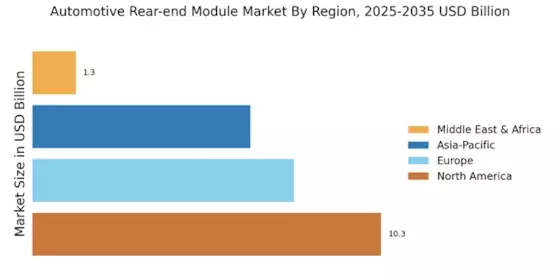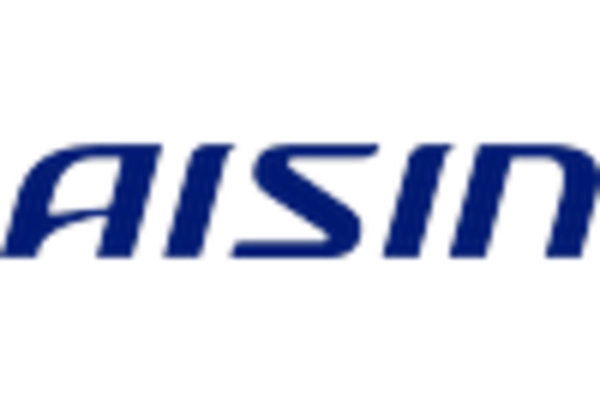Rising Demand for Electric Vehicles
The increasing adoption of electric vehicles (EVs) is a pivotal driver for the Automotive Rear-end Module Market. As manufacturers pivot towards electrification, the design and functionality of rear-end modules are evolving to accommodate new technologies such as battery placement and electric drivetrains. In 2025, it is estimated that EV sales will account for a substantial percentage of total vehicle sales, necessitating innovative rear-end solutions. This shift not only enhances vehicle performance but also aligns with consumer preferences for sustainability. Consequently, the Automotive Rear-end Module Market is likely to experience significant growth as automakers invest in advanced rear-end designs that support EV architecture.
Growth of the Automotive Aftermarket
The expansion of the automotive aftermarket is a crucial driver for the Automotive Rear-end Module Market. As vehicle ownership rates rise, the demand for replacement parts and upgrades is also increasing. Consumers are more inclined to invest in aftermarket modifications to enhance vehicle performance and aesthetics, particularly in rear-end modules. This trend is expected to continue, with the aftermarket projected to grow significantly in the coming years. Consequently, the Automotive Rear-end Module Market stands to benefit from this growth, as manufacturers and suppliers focus on providing high-quality aftermarket solutions that cater to consumer preferences.
Regulatory Compliance and Safety Standards
Stringent safety regulations and compliance standards are increasingly influencing the Automotive Rear-end Module Market. Governments worldwide are implementing rigorous safety protocols to enhance vehicle safety, particularly in rear-end collisions. This has led manufacturers to innovate and improve rear-end module designs, incorporating advanced materials and technologies that meet or exceed these standards. For instance, the introduction of crash test ratings has prompted automakers to prioritize rear-end safety features, thereby driving demand for sophisticated rear-end modules. As a result, the Automotive Rear-end Module Market is expected to expand as companies strive to comply with evolving regulations while ensuring consumer safety.
Technological Advancements in Manufacturing
Technological advancements in manufacturing processes are significantly impacting the Automotive Rear-end Module Market. Innovations such as automation, 3D printing, and advanced materials are streamlining production and enhancing the quality of rear-end modules. These technologies enable manufacturers to produce lightweight yet durable components, which are essential for improving fuel efficiency and performance. In 2025, the integration of smart manufacturing techniques is projected to increase production efficiency by a notable margin, thereby reducing costs and lead times. Consequently, the Automotive Rear-end Module Market is poised for growth as manufacturers leverage these advancements to meet rising consumer expectations and industry demands.
Consumer Preference for Enhanced Vehicle Features
The growing consumer preference for enhanced vehicle features is a significant driver for the Automotive Rear-end Module Market. Modern consumers are increasingly seeking vehicles equipped with advanced functionalities, such as integrated technology and improved aesthetics. This trend has prompted manufacturers to innovate rear-end modules that not only serve functional purposes but also enhance the overall vehicle design. Features such as integrated lighting, sensors, and connectivity options are becoming standard in new models. As a result, the Automotive Rear-end Module Market is likely to witness increased demand as automakers strive to meet these evolving consumer expectations.



















Leave a Comment